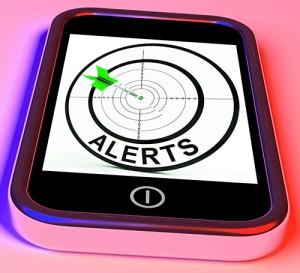 There have been a lot of technology updates in law enforcement just in the last five years. Some things such as body cameras are controversial due to privacy issues; others such as Tasers are controversial due to the potential for misuse, but can save lives when used instead of a gun to subdue a suspect. This week I will highlight a few of the newest technologies that are used on the beat and in the back room.
There have been a lot of technology updates in law enforcement just in the last five years. Some things such as body cameras are controversial due to privacy issues; others such as Tasers are controversial due to the potential for misuse, but can save lives when used instead of a gun to subdue a suspect. This week I will highlight a few of the newest technologies that are used on the beat and in the back room.
Body Cameras
First there were car mounted cameras, and now more officers are being outfitted with body cameras. The theory is that officers will use greater discretion in their interaction with the public if they know that their actions are recorded, and ideally the public will behave better as well. Granted, they only work if they are turned on and that is still up to the wearer, but there are also back end technology issues to deal with. The Los Angeles Police Department has approximately 9,000 officers, so if each officer recorded on average one hour a day, that would be 9,000 hours of video each day that need to be stored and catalogued. Where is that kept? On a local server or in the cloud? Who is going to extract the exact footage when questions arise? Are the videos tagged such that a query can be run to compare best practices or patterns of abuse? The initial cost of the camera is only the beginning; there are many other considerations.
Tasers
Electronic control devices used by officers today hearken back to the cattle prod, which was invented in the late 1800s. Officers actually used cattle prods in the 1960s to break up unruly crowds, so the device of today is a true technological advance. The modern Taser was patented in 1974 by NASA researcher Jack Cover, for use by law enforcement. The original design used gunpowder to eject electrodes; now they use compressed air or nitrogen gas as a propulsion system. Studies show the voltage can cause cardiac arrest in some people, but the device has been used over the last forty years as an alternative to firearms. There have been concerns expressed about inappropriate use of Tasers; however, when used appropriately they can offer a non-lethal alternative to firearms.
License Plate Readers
Automatic License Plate Readers (ALPR) have been in place for close to 10 years and are installed on either police vehicles or on stationary objects such as bridges or signs. These readers take pictures of license plates at the rate of one per second on vehicles traveling up to 100 miles per hour. They commonly use infrared for night vision and the image can be compared with a database to track the movement of a vehicle. They are frequently used at toll-booths, particularly during off hours. I received a notice last year that I owed a toll for crossing the George Washington Bridge into New York and realized that it was for a vehicle registered in my name that my son was driving. When the plate image was captured, it was quickly linked to me through vehicle registration. While they are useful for such applications, there are concerns that the technology may be used to track innocent citizens. In a Wired magazine article earlier this year, the American Civil Liberties Union (ACLU) uncovered documents that show that the FBI temporarily halted purchase of these devices in 2012 due to privacy concerns. The worry is that agencies such as the FBI might use the devices, algorithms, and data analytics to track a person and even predict their future movements. This is big data analytics at work.
Social Media
Law enforcement agencies are using social media to promote a public image and to engage the public to help solve crimes and find missing persons. It is also used by agencies to track felons who are thought to be in possession of firearms or other items that put them in violation of their parole or probation. Facebook in January announced that it would include Amber Alerts in their news feed to widen the search for missing children.
Thoughts
New technologies enable law enforcement to do their job more efficiently and more effectively. They are still sorting out the privacy issues, but the same is true for GoPro cameras and drones. We need to be deliberate in drawing the line between protecting personal privacy and allowing the use of potentially invasive tools to protect the public and officers.
What are your thoughts? Are there other cool tools that I missed? Are we doing a good job of balancing the use of technology for the greater good and the right to personal privacy? Let me know.
Kelly Brown is an IT professional and assistant professor of practice for the UO Applied Information Management Master’s Degree Program. He writes about IT and business topics that keep him up at night.



 About Kelly Brown
About Kelly Brown